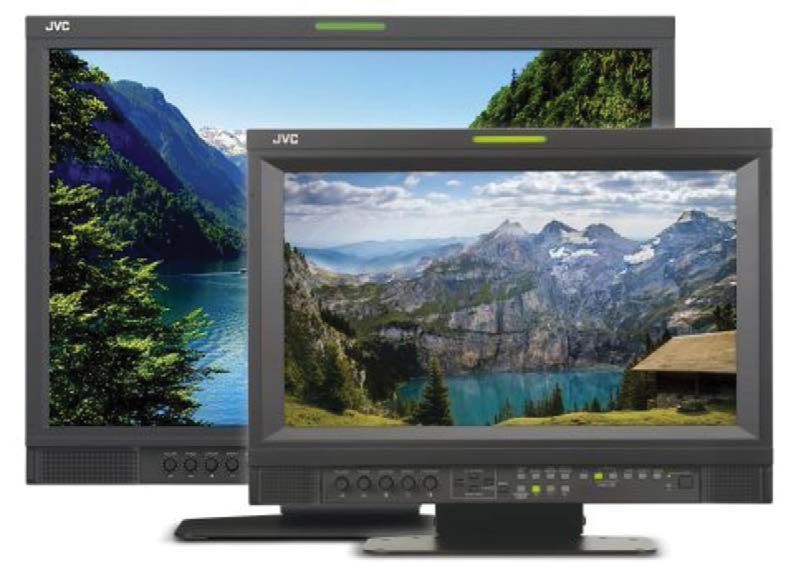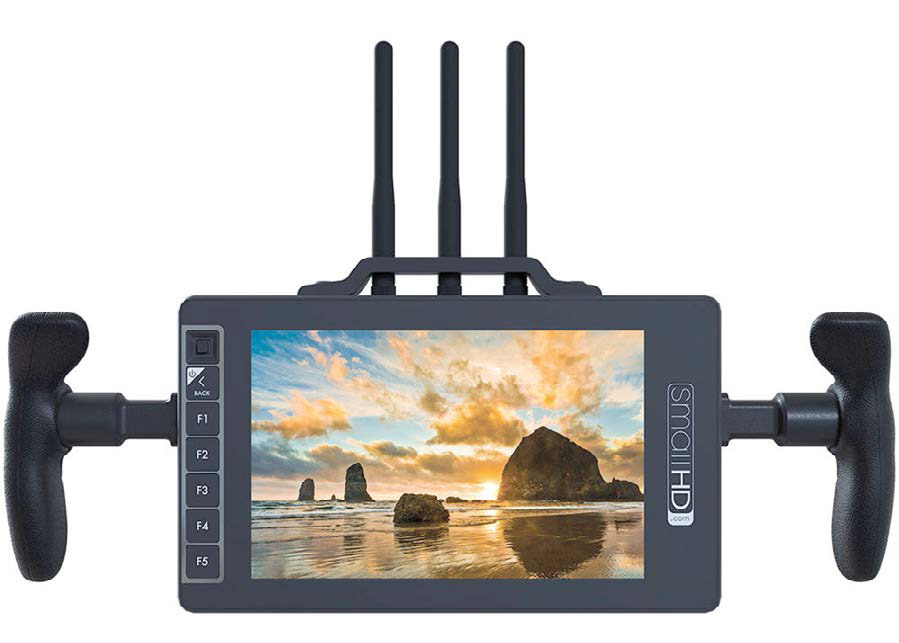NAB Show Product Review : Signal Processing & Analysis
The IP era in broadcasting is upon us, and there was plenty to see in this area at the 2018 NAB Show. Television is also beginning to move into its next stage of advancement—ultra high definition, high dynamic range, extended color gamut and higher frame rates.
However, whether its IP, SDI or analog signals flowing through the equipment racks, one thing is inevitable, and that’s the need for monitoring, signal processing, and test and measurement gear. There was plenty to see along these lines at the NAB Show this year.
EAS/CAP
DIGITAL ALERT SYSTEMS showcased its EAS-NET Advanced Emergency Alerting (AEA) upgrade for their DASDEC product. It facilitates urgent communications between broadcasters and their audiences via text graphics and audio, and provides a more interactive way to convey emergency messages.
GORMAN REDLICH demonstrated their Capwatch system for sending weather alerts received from NOAA weather service servers via digital signage, email, public address systems and other methods of dissemination.
NVERZION showed off their NFinity Plus package for the company’s automation system. It includes an EAS interface, an enhanced graphics package and more.
CLOSED CAPTIONING
The professional video industry's #1 source for news, trends and product and tech information. Sign up below.
AJA introduced v2.1 firmware update for its Helo streaming platform with support for closed captioning streaming from SDI input.
COMPROMPTER premiered Caption Central Multi—Gen 2, an enhanced version of the company’s captioning systems. It accommodates the voices of as many as eight speakers, sending the name/title of each along with the speech-to-text conversion.
EEG ENTERPRISES highlighted the latest enhancements to the company’s Lexi automatic captioning “Topic Model” technology that recognizes topics and context for higher accuracy in speech-to-text conversion.
ENCO premiered updates to its enCaption4 automated captioning system which provide both higher processing speed and greater accuracy. The speed enhancement brings the system’s caption processing/delivery time performance close to what can be achieved with a human captioner. The updates also bring the accuracy up to 90 percent or better.

LINK ELECTRONICS took the wraps off their ACE-2200 automated captioning engine for converting speech into data for encoding via a TS-232 port or TCP/IP.
TELESTREAM spotlighted their new “one box solution” for closed-caption encoding requirements that’s part of the company’s latest version of Lightspeed Live Stream live encoding and packaging system. It handles 608/708 insertions and allows simultaneous captioning of multiple streams.

VOICEINTERACTION demonstrated a range of new multilanguage features for their Audimus.Media live real-time automated closed captioning software. Features include an automatic live translation module that provides a subtitle stream in a different language than being delivered by the speaker and a live dubbing module that creates an audio track with a synthesized foreign voice.
ENCODERS/DECODERS
APPEAR TV debuted a range of codec encoders spanning the bitrate and latency gamut, and all designed for use in the company’s X10/20 platform. Models included an updated low-latency model that handles TICO JPEG 2000 and HEVC applications all within a single unit.
BULEFISH444 demonstrated their Kronos product lineup, which provides multi-channel 4K, high dynamic range, high frame rate SDI and SMPTE 2011 support for video-over-IP workflows.
COBALT DIGITAL premiered their OG-PC-x86 PC-on-an-openGear circuit board. While not strictly an encoding/decoding product, it could prove to be a good tool for monitoring such operations.

FOR-A displayed their FRC-9100 frame rate converter that provides high-quality conversion and is ideally suited for live transmission applications.
HITACHI-COMARK demonstrated their future-proof Titan software-based encoding technology that supports all resolutions from SD to 4K, as well as just about any codec, including MPEG-2, H.264, and HEVC. It’s slotted for replacing ATSC 1.0 transmission encoding systems, in preparation for 3.0 broadcasting. The company also announced a partnership agreement with Ateme Corp. for ATSC 1.0 and ATSC 3.0 encoding solutions.
VITEC VIDEO INNOVATIONS demonstrated the all-new MGW Diamond Touch military-grade HEVC and H.264 four-channel unit that delivers IP video from SDI sources. It provides HEVC encoding from a very small and compact package, and its low power consumption makes it ideal for mobile applications.
PROCESSING
AJA took the wraps off a new firmware for its FS-HDR converter/frame synchronizer. The enhancement provides users with several new and expanded capabilities including Colorfront Engine support for ITU BT.2408-0 Operational Practices in HDR Television Production, support for simultaneous 4K and 2K output modes with independent SDR and HDR control, local monitoring via HDR-capable displays, standardized HDR test patterns and more.
APERI exhibited the V-Stack third-generation virtualization product with expanded functionality in handling multiple processes, including logging and monitoring. Booth visitors also viewed the company’s new TICO 4K compression app.
APPEAR TV featured their Live OTT Transcoder software product which allows broadcasters to deliver high-quality multiscreen content with commercial off-the-shelf hardware, and features frame rate conversion, de-interlacing, logo insertion, and adjustment of delivery speed versus quality level.
ATEME demonstrated their Titan codec product with support for AV1, as well as CMAF (fMP4) on Apple devices.
AXEL TECHNOLOGY featured their PC-based multiple channel Multi Cross Converter that simultaneously inputs and outputs SDI, NDI or IP with selectable output resolutions and frame rates.
CRYSTAL VISION showed off their Marble-V1 hardware media processor for video-over-IP applications. It features powerful CPU/GPU processing capability, and includes six bidirectional SDI I/O ports, four 10G Ethernet ports and eight AES audio ports.

EVERTZ rolled out their Scorpion Smart Media Aggregation platform for dark fiber and managed IP networks. The device supports industry IP standards and interfacing of broadcast signals with IP networks. Various signal types are accommodated via mini-modules that allow users to custom tailor the system for their individual requirements. Evertz also got showed its Render-X high-speed transcoding solution, as well as the 570iTXE video delivery platform that handles receiving/decoding of content, as well as normalizing and multiple encoding duties.
GRASS VALLEY spotlighted their IQUCP25/50 universal computer processor, a configurable hardware platform for IP processing and interfacing applications. It handles essence, network and signal processing requirements, and is optimized for broadcast applications and is designed for scalability and flexibility.
HARMONIC featured their VOS Software SW Cluster media processing technology that provides encoding, playout, packaging for multiple deployments, including private and public cloud.

MAGEWELL ELECTRONICS demonstrated a number of PCIe-slot signal processing cards, including the Pro Capture Dual HDMI 4K Plus/Pro Capture Dual SDI 4K Plus with two independent 4K/60fps channels. The SDI version supports 12G single-link, 6G dual-link, or 3G quad-link operations
NEVION touted the latest updates for its Virtuoso software-defined media node, which includes support for both UHD/4K TICO and JPEG 2000 encoding.
TELESTREAM featured its Vantage Platform which supports UHD, HDR and IMF, and handles ingestion, editing, transcoding, and packaging functions.
CONVERSION
AJA introduced four new converters: the OG-UDC 3G-SDI Up, Down, Cross-Converter; OG-4K2HD 4K/UltraHD-SDI to 3G-SDI Down-Converter; OG-Hi5-4K-Plus 4K/Ultra 3G-SDI to HDMI 2.0 Converter; and the OG-HA5-4K HDMI to 4K/Ultra 3G-SDI Converter.
BLACKMAGIC DESIGN debuted the Black-magic Mini Converter UpDownCross HD, a new broadcast quality standards converter that lets customers convert any SD or HD video format to any other SD or HD video format via SDI and HDMI input and output connections. In addition, customers also get automatic scaling of computer resolutions to standard broadcast formats.
COBALT DIGITAL spotlighted their 9904-UDX-4K 12G-SDI UHD up/down/cross converter that provides quad 3G-SDI and 12G-SDI I/O, along with SDI muxing/de-muxing.
FOR-A introduced the USF-106UDC-12G 4K up/down converter. It provides conversion to and from a range of signals ranging from SD to UHD and offers interlaced or progressive scan outputs, frame synchronization, audio/SDI error correction, browser-based control via a built-in web server, and more.
MULTIVIEWERS
APANTAC debuted the TX #, part of its TAHOMA Series of multiviewers. The modular TX # features 64x64 router outputs, 16 unique fully featured, assignable and independent multiviewers.
APERI showed an IP multiviewer app with capability for monitoring hundreds of IP inputs and five fully-independent outputs in IP, SDI or HDMI.
BLACKMAGIC DESIGN debuted the Black-magic MultiView 4 HD, a new multi-viewer that lets customers monitor 4 completely independent SDI video sources on a single display. Customers can monitor any combination of SD and HD formats and frame rates at the same time.
CINEGY highlighted its multiviewer product which receives RTP/UDP streams via Ethernet and features analysis and alerting capabilities for instantly detecting signal problems and more.
DVEO demonstrated their DVB-ASI O Mon HD ASI/4 quad display and transport stream analyzer. It displays four streams simultaneously and also provides signal analysis and alarms.
LAWO launched the vm_dmv64-4, calling it “the world’s first infinitely expandable true IP multiviewer.” Complementing Lawo’s existing vm_mv16-4 and vm_mv24-4 multiviewer line-up, the new virtual module (VM) vm_dmv64-4 for Lawo’s V__matrix IP Routing, Processing & Multiviewing Platform provides unlimited inputs and heads, as well as full support of IP and SDI sources in 4K/UHD, 3G, HD and SD.

UTAH SCIENTIFIC demonstrated their SynView 4k and IP multiviewer for Utah 400 Series hybrid routers. Its SynView technology from Axon features single field latency and external looping for accommodating multiple inputs.
COLOR CORRECTION
AJA spotlighted a new software release—v2.0—for its FS-HDR processor, which provides users with 12 new controls for color correction,
CRYSTAL VISION spotlighted their Safire 3 real-time SDI chromakeyer product that includes color correction along with lighting compensation, internal frame synchronization, and more.
TEST & MEASUREMENT-VIDEO & AUDIO
AJA offered a tech preview of its new HDR Image Analyzer it has developed in partnership with Colorfront. The 1RU product feature waveform, histogram, vectorscope and Nit level HDR monitoring.

MARSHALL ELECTRONICS introduced the AR-DM61-BT, a multichannel digital audio monitor with preview screen. The audio/video QC solution which features a 10-inch LCD intuitive touchscreen panel and displays up to 64 channels vertical or two detailed channels horizontal with LKFS bars and peak indicators.
QLIGENT introduced Match, the latest software addition to its flagship Vision platform. Match delivers real-time detection of programmatic and playout errors across multiple content delivery platforms. An automated solution that monitors by exception, Vision Match can mine, compare, and analyze a tremendous amount of data and relay just the most meaningful information.

ROHDE & SCHWARZ introduced new features to its ETL TV analyser, including support for HEVC and UHD. It combines video and MPEG transport stream TS analysis, and serves as a spectrum analyser.
OMNITEK featured its Ultra 4K Tool Box that provides conversion, generation and analysis of TV and digital cinema signals in formats up to 4096 x 2160/60. It performs format conversion and includes SDI eye and jitter analysis.
PHABRIX introduced SMPTE ST 2110 and 2022-6 support for its Qx Series analysis and monitoring platform and its Sx Series portable analyzers. Also new for Qx is Packet Profile Generator (PPG), an advanced toolset for stress testing video networks, and Packet Interval Timing (PIT) analysis for rapid diagnosis of issues such as packet congestion.
TEKTRONIX introduced new features for its Aurora file-based QC system, which supports the latest IMF standards, has expanded AWS workflow compatibility and S3 storage support, and can validate 4K-HDR content.
STREAMING
INTERRA SYSTEMS spotlighted their Baton quality control platform for checking formats and detecting video artifacts and baseband issues in video streams.
LAWO introduced the smartSCOPE Deep Packet Inspection & Network Analyzer, a media-agnostic, high-density 24/7 analysis platform for IP flows in live production and delivery networks. The company also debuted smartDASH System Monitoring and Realtime Telemetry, a vendor-agnostic enterprise software suite designed to provide full network and media visibility across an all-IP, all-SDI or hybrid WAN/LAN broadcast infrastructure
NEVION demonstrated its Virtuoso TNS4200 hardware tool for continuous monitoring of broadcast streams on IP/Ethernet and DVB-ASI. It enables fast fault detection and diagnostics with an easy-to-use user interface.
SENCORE introduced its VB440 100G SMPTE 2110 Analyzer that monitors multiple SMPTE 2110 HD/3G/4K signals in real time.
TEKTRONIX showed off its PRISM real-time streaming analyzer for hybrid IP/SDI facility operations and maintenance. It can be used for 4K with wide color gamut and high dynamic range evaluations, and monitors IP formats including ST2022-6/-7, ST2110 and ST2059-2.
TELESTREAM debuted a new open API that can be used for configuration, control and data extraction for its Inspector LIVE and Surveyor ABR Active systems The company also demonstrated an upgrade to its multiscreen end-to-end monitoring and analytics solution that includes new versions of its Surveyor ABR and Inspector Live systems.
RF AND MPEG
SENCORE launched the latest version of its VideoBRIDGE Nomad-Pro portable probe that provides simultaneous IP, RF, Sat, ASI and OTT monitoring, now with 8VSB/QAM-B RF input.
TRIVENI DIGITAL launched StreamScope Portal II analyzer, designed for ATSC 1.0 and 3.0. It features a two-in-one hardware platform design, high-res touchscreen interface, advanced RF spectrum analysis capabilities, rules-based troubleshooting, and ultra-portability factor. StreamScope Portal II handles a variety of input options (i.e., Ethernet, ASI, and basic or advanced RF).
HITACHI-COMARK demonstrated the QoS-1000 and QoS-1000RT ATSC monitoring systems for determining transmitter or repeater site ATSC 1.0 performance and are ATSC 3.0 upgradable.
VIDEO MONITORS
IKEGAMI debuted the HQLM-3120W, a 31-inch 4K monitor with full 4096 x 2160 resolution, 10-bit processing, and a 178-degree viewing angle.

JVCKENWOOD spotlighted their DT-U 4K HDR monitor series that feature 20-bit color depth and are available in 28-inch (DT-U28U) and 31.5-inch (DTU31U screen sizes. Both models offer native 3840 x 2160 resolution, LED backlighting along with wide color gamut and HLG/PQ HDR compatibility. The DT-Us offer quad-split display capability with SDI inputs, multiple 4K input ports, and are available with an optional SFP adapter. The company also showed its DT-G monitor series that also offer 4K signal support, 10-bit color processing and a 1000:1 contrast ratio.
SMALLHD showed several new additions to its FOCUS series, including the 5-inch HDMI 1920 x 1080 OLED touchscreen model with a Micro HDMI input; the OLED SDI, which is identical to the HDMI, but with an SDI input port; the Bolt TX, with a 5-inch LCD touchscreen and a built-in Teradek transmitter with a 500-foot range; the Bolt RX, also with a 5-inch LCD touchscreen, and compatible with the Bolt TX; and the 703 Bolt Wireless Director’s Monitor a 7-inch, full HD monitor with built-in wireless Teradek receiver.

SONY’S big spotlight was trained on the BVM-X300 V2 30-inch Trimaster EL OLED 4K critical reference monitor which features a very high standard of color reproduction and offers a very wide viewing angle. Exhibit visitors also got to view the 55-inch 4K PVMZ550 Trimaster EL OLED high-grade monitor, as well as the company’s Crystal LED modular display technology that features a borderless panel design that allows the creation of displays of virtually any dimension and with any desired aspect ratio.
TV LOGIC launched four new 4K models: the LEM-550R, a 55-inch OLED model engineered for critical viewing applications and with 12G-SDI and HDM v2.0 input ports; the LUM-313G (350-nit brightness) and the LUM-318G (850-nit output 31.1-inch displays; and a 43-inch version accepting both quad 3G-SDI and HDMI 2.0 sources. Also featured were two new HD models, the LVM-1715 (17-inches and 1920 x 1080 resolution) and the LVM-241S (24-inches and 1920 x 1200 resolution). Both offer wide color gamut capability.
WOHLER demonstrated a newly-upgraded iAM-VIDEO-2 monitor. The unit now sports a more user-friendly touchscreen and 3G-SDI support, as well as MPEG-2 and MPEG-4/H.264 AVC via IP or ASI connectivity, allowing users to monitor both pre-and post-encoded signals.
James E. O’Neal has more than 50 years of experience in the broadcast arena, serving for nearly 37 years as a television broadcast engineer and, following his retirement from that field in 2005, moving into journalism as technology editor for TV Technology for almost the next decade. He continues to provide content for this publication, as well as sister publication Radio World, and others. He authored the chapter on HF shortwave radio for the 11th Edition of the NAB Engineering Handbook, and serves as contributing editor of the IEEE’s Broadcast Technology publication, and as associate editor of the SMPTE Motion Imaging Journal. He is a SMPTE Life Fellow, and a member of the SBE and Life Senior Member of the IEEE.

